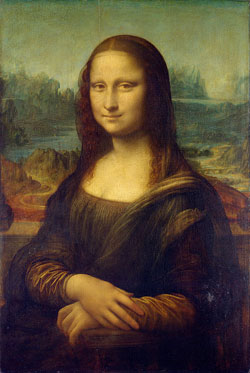
Source: Mona Lisa, by Leonardo da Vinci, from C2RMF retouched, Leonardo Da Vinci, Wikimedia
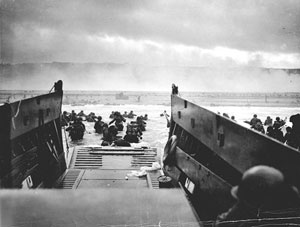
Source: 1944 NormandyLST, Robert F. Sargent, Wikimedia
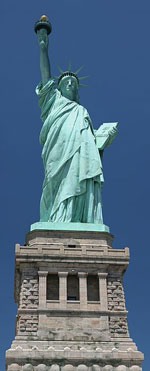
Source: Statue of Liberty frontal 2, Daniel Scwen, Wikimedia
In the previous section of this lesson, you learned about metaphors and practiced finding them. In this section, you will tackle allusions, references within poems to another work of literature, art, or real event.
Look at the words and phrases below that are sometimes alluded to in our reading. Are they associated with literature, art, or an event? Move each word or phrase into its appropriate column.

While it may prove difficult to find a poem that alludes to or references The Hunger Games since it is so recent, all of the other examples might be found in poetry. A poet will use an allusion with the knowledge that readers will understand its meaning, that they will be familiar with famous works of literature, pieces of art, or important events. An allusion nudges the reader to read between the lines and infer what the poet is saying.
Let’s take a look at how allusion can be used in poetry. Much of William Shakespeare’s play Romeo and Juliet is written in verse. In this selection from act I, Romeo has not yet met Juliet, but he is speaking about his first love, Rosaline. See if you can spot the allusions Romeo uses.
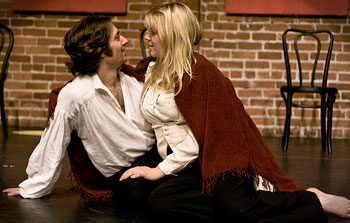
Source: Romeo and Juliet, teejayfaust, Flickr
Well, in that hit you miss: she’ll not be hit
With Cupid’s arrow; she hath Dian’s wit;
And, in strong proof of chastity well arm’d,
From love’s weak childish bow she lives unharm’d.
She will not stay the siege of loving terms,
Nor bide the encounter of assailing eyes,
Nor ope her lap to saint-seducing gold:
O, she is rich in beauty, only poor,
That when she dies with beauty dies her store.
 As Romeo describes the beautiful Rosaline, he uses two allusions in the second line. He refers to Cupid and to Dian. Look up both of these references and write their meanings using your notes. When you are finished, check your understanding to see possible responses.
As Romeo describes the beautiful Rosaline, he uses two allusions in the second line. He refers to Cupid and to Dian. Look up both of these references and write their meanings using your notes. When you are finished, check your understanding to see possible responses. Sample Responses:
Cupid: In classical mythology, Cupid is the god of love, romance, and affection. Dian (to find this reference, look up “Diana”): Diana is the ancient Roman goddess of the moon, the hunt, and chastity.
While you may not have been familiar with Diana, you probably have heard of Cupid since he is often mentioned around Valentine’s Day. When Romeo says that Rosaline has not been “hit with Cupid’s arrow,” he is saying that while he loves Rosaline, she does not return his affection. His second reference, to Dian(a), also indicates that she has decided not to return his love and has decided to remain chaste.
After Romeo meets Juliet, he forgets all about Rosaline. It’s as if she never existed. Romeo and Juliet fall in love and get married in less than 24 hours after meeting one another. As dawn breaks on their first day as a married couple, Juliet begs Romeo to stay. He responds with the following statement:
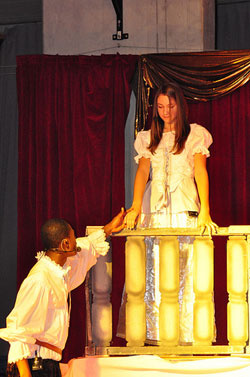
Source: Romeo and Juliet, teejayfaust, Flickr
Let me be ta’en, let me be put to death;
I am content, so thou wilt have it so.
I’ll say yon grey is not the morning’s eye,
’Tis but the pale reflex of Cynthia’s brow;
Nor that is not the lark, whose notes do beat
The vaulty heaven so high above our heads:
I have more care to stay than will to go:
Come, death, and welcome! Juliet wills it so.
How is’t, my soul? let’s talk; it is not day.
 Use your notes to identify the allusion and explain its meaning. (You will probably need to look up the reference.) When you are finished, check your understanding to see a possible response.
Use your notes to identify the allusion and explain its meaning. (You will probably need to look up the reference.) When you are finished, check your understanding to see a possible response. Sample Response:
In Greek mythology, Cynthia is the goddess of the hunt and the moon. Romeo wants to stay with Juliet so badly that he says it’s all right if he is captured and even put to death. He will pretend that the light isn’t morning, that it’s the reflection of the moon. He insists that it is not daylight.
If you come across a reference you don’t understand when you are reading poetry, look it up. Not only will your newfound knowledge help you understand the poem, but it will also make the poem all the richer.